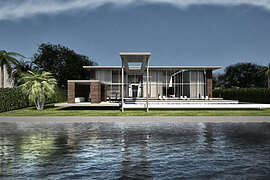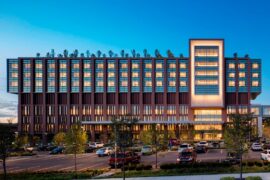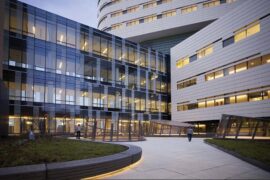Revitalizing Local Markets – Commercial Architecture – Architecture dissertation topics
In the dynamic realm of architecture, the intersection of functionality, aesthetics, and community impact is crucial. “Revitalizing Local Markets – Commercial Architecture” stands as a pivotal theme in contemporary architectural discourse, bridging the gap between economic growth and urban rejuvenation. This article delves into the intricate facets of commercial architecture, aiming to enlighten students of architecture and enthusiasts alike.
The Essence of Commercial Architecture
Commercial architecture, a multifaceted discipline, encompasses the design and construction of structures that facilitate economic activities. Local markets, as vital hubs of commerce, are prime candidates for architectural interventions. Revitalizing these markets is not merely about erecting buildings; it’s about crafting spaces that harmonize with the community, fostering economic resilience and cultural vibrancy.
Historical Perspectives
Understanding the historical context of commercial architecture provides valuable insights into its evolution. From the bustling bazaars of ancient civilizations to the market squares of medieval Europe, the design of commercial spaces has always been intertwined with societal needs and cultural dynamics. Examining successful revitalization projects from the past serves as a blueprint for contemporary endeavors.
Typology of Commercial Architecture
-
Street Markets:
Street markets epitomize the grassroots of commerce. Architects must consider factors like foot traffic, vendor spaces, and weather resilience. Innovations in modular design and sustainable materials can redefine the traditional street market experience.
-
Shopping Malls:
In contrast, shopping malls represent a more controlled environment. Architects need to focus on creating inviting, accessible spaces that encourage social interaction. Integrating green spaces and recreational areas within malls can contribute to a holistic shopping experience.
-
Mixed-Use Developments:
Blurring the lines between commercial and residential spaces, mixed-use developments are gaining popularity. This typology demands a nuanced approach, balancing the needs of both businesses and residents. Thoughtful zoning and design considerations can foster a symbiotic relationship.
Urban Design Integration
Revitalizing local markets extends beyond individual structures. Urban design plays a pivotal role in seamlessly integrating commercial spaces into the existing urban fabric. Plazas, walkways, and landscaping contribute to a cohesive environment that encourages community engagement.
Sustainable Practices in Commercial Architecture
A cornerstone of modern architecture is sustainability. Integrating eco-friendly practices in commercial architecture not only aligns with global trends but also contributes to the long-term viability of local markets. Green roofs, energy-efficient lighting, and water recycling systems are just a few examples of how architects can weave sustainability into the fabric of commercial spaces.
Case Studies: Successful Revitalization Projects
-
Pike Place Market, Seattle:
Pike Place Market stands as a testament to successful market revitalization. The preservation of historical elements, incorporation of local artisans, and a strategic mix of retail and food spaces have transformed it into a thriving cultural and economic hub.
-
Mercado de la Boqueria, Barcelona:
The Mercado de la Boqueria exemplifies how architectural interventions can elevate the market experience. Modernizing infrastructure while preserving the essence of the market’s rich history has attracted both locals and tourists, breathing new life into the heart of Barcelona.
The Role of Interior Design
A well-designed interior is the soul of commercial architecture. It’s not just about aesthetics; it’s about creating functional and ergonomic spaces that enhance the overall user experience. Interior design choices, from lighting to spatial layout, significantly impact how customers perceive and interact with a commercial space.
The Educational Perspective: Dissertation Opportunities
For students of architecture embarking on a dissertation journey, “Revitalizing Local Markets – Commercial Architecture” offers a rich tapestry of topics to explore. Potential areas of focus include historical analyses of market spaces, sustainable design practices, and the socio-economic impact of market revitalization projects. Engaging with case studies and interviewing professionals in the field can provide valuable insights for a comprehensive dissertation.
Conclusion: Empowering Communities Through Design
In conclusion, the revitalization of local markets through commercial architecture is a multifaceted endeavor that goes beyond the blueprint. Architects, interior designers, and urban planners hold the key to transforming these spaces into thriving community hubs. By embracing historical wisdom, incorporating sustainable practices, and fostering a holistic approach, professionals in these fields can leave a lasting impact on the socio-economic landscape. It’s not just about constructing buildings; it’s about empowering communities through thoughtful and purposeful design.
Call to Action
As stewards of the built environment, architects and designers are urged to take up the mantle of revitalizing local markets. Collaborate with communities, leverage sustainable practices, and champion innovative design solutions. Together, we can breathe new life into the heart of our cities, fostering economic growth, cultural vibrancy, and a sense of community pride.

















